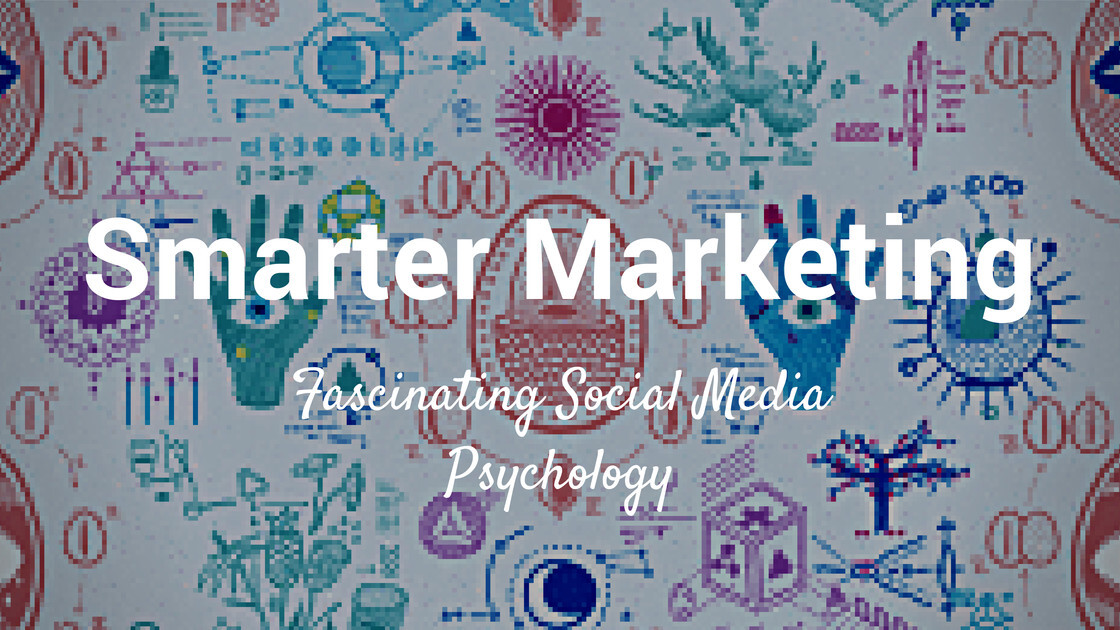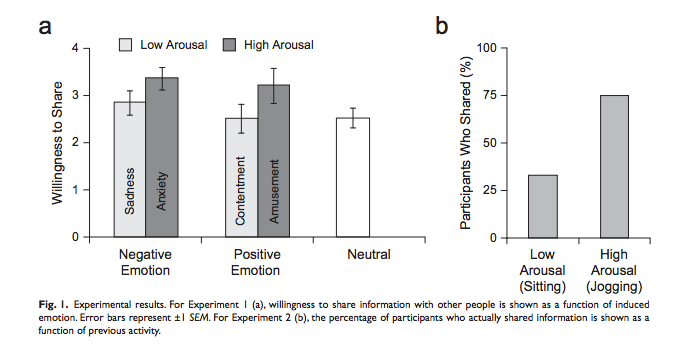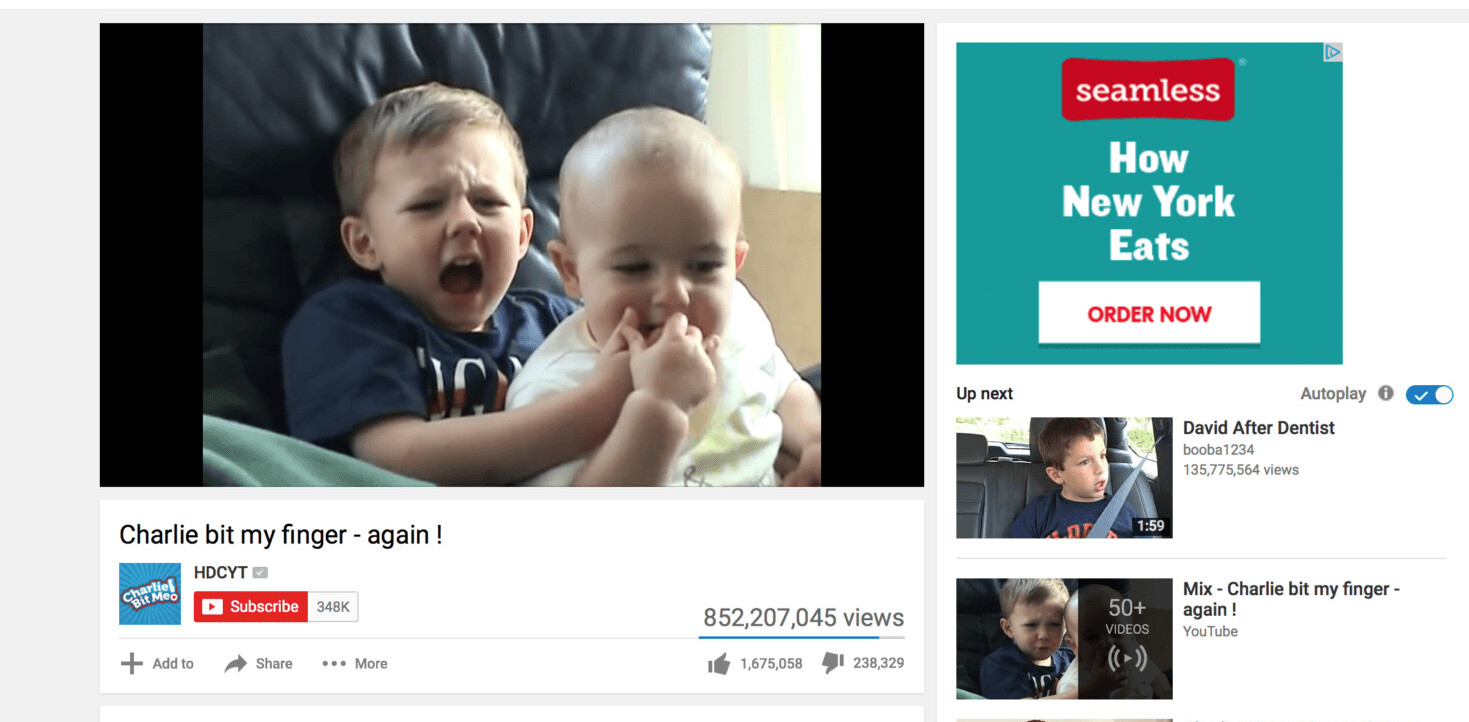
This post originally appeared on the Buffer blog.
One of my favorite things about social media is that it’s still such a young and new form of communication. It feels too early to take anything as a given, so we’re all experimenting, testing and learning together.
Every day seems to bring exciting new studies as research shows us more about how social media is changing the way we relate to one another, share information and even form our identities.
I’ve been collecting a few of these studies and thinking over how they might relate to making us all better marketers (and hopefully better people, too). I thought I would share them with you today. Here are the major findings of seven social media psychology studies that will make your marketing smarter.
1. We’ve all written a post and then changed our minds
Most of us are familiar with that slightly uncomfortable feeling you get before you publish something new to the world—we’ve even written about it here.
Sometimes the feeling leads to a creative breakthrough. Other times, it causes us to change our minds altogether. To find out more about how this feeling affects the way we publish updates to social media, two researchers at Facebook conducted a study on self-censorship (that is, the posts you write and never actually publish).
Over 17 days, they tracked the activity of 3.9 million users (studying the actions but “not the keystrokes or content”). During the course of the study, 71 percent of users typed out at least one status or comment and then decided not to submit it. On average, they changed their mind on 4.52 statuses and 3.2 comments.

Researchers theorize that people are more likely to self-censor when they feel their audience is hard to define. Facebook audiences tend to be quite diverse which makes it hard to appeal to everyone. Users were less likely to censor their comments on someone else’s post because the audience was more concrete.
Marketing takeaway: We all want to know our audience more deeply so we can communicate with them better. To understand your own audience better, try developing personas.
And remember: Just because you don’t always hear from your audience doesn’t mean they’re not listening.
2. Emotions shared online are contagious (especially happiness!)
We know that emotions can be contagious in person-to-person settings, but not much was known about whether emotions can spread in the same way online until one of the largest-ever studies on the subject.
Researchers at the University of California, San Diego, School of Medicine, used software to examine the emotional content of one billion Facebook posts over two years—particularly on rainy days, when the chance of negative posts was generally higher.

Using weather records, they were able to see that gloomy rainy-day emotions were transmitting through the Facebook network to friends who lived in places where it wasn’t raining.
In other words:
“What people feel and say in one place may spread to many parts of the globe on the very same day.”
A more recent (and more controversial) Facebook study came to similar conclusions.
The good news? Even though researchers were focusing on negative emotional contagion, they found that positivity is even more contagious.
“Intriguingly, although rain is the impetus for this contagion, positive messages appear to be more contagious than negative.”
Negative posts prompted about 1.29 more negative posts from friends, while positive posts prompted an average of 1.75 more positive posts.
Marketing takeaway: Keep on the sunny side, marketers! Keep your messaging positive and customers happy. Take lingering customer problems offline and deal with negative feedback swiftly in order to keep it from spreading.
3. Your profile photo makes a big impression in a split second
If a picture is worth a thousand words, the right social media profile picture is worth its weight in gold. A recent study published in Psychological Science discovered that we draw conclusions about people based on a given photo in less than a second (40 milliseconds, to be precise).
Researchers used photos all taken in similar lighting, but with slightly different facial expressions. They asked participants in an online survey to view and rate headshots on characteristics like attractiveness, competence, creativity, extraversion, meanness, trustworthiness, and intelligence.
The study showed that even tiny variances in facial expression in a headshot can lead to wholesale changes in the way the image is perceived.
Marketing takeaway: It might seem small, but it’s likely worthwhile to A/B testyour profile photo on professional social networks. Cyrus Shepard has a fascinating study of doing just that over at the Moz blog.
4. Most of us share selectively (but it differs by country)
Almost 1/4 of social media users around the world—24 percent—share “everything” or “most things” online, according to a survey by marketing research firm Ipsos.
Another segment of 19 percent shares nothing online at all, and the percentage of those who identify as big sharers varies wildly by country.
The Washington Post noted a “clear relationship between ‘oversharing’ and Internet penetration: Nearly all the countries that overindex are in Asia, Africa and Latin America, where penetration is low; meanwhile, almost all the countries that ‘undershare’ are in Europe, where more people are online.”
Marketing takeaway: Keep your expectations for social sharing of your content in line with your audience’s norms. Consider your region and your audience’s demographics for a clearer picture.
5. Getting social feedback leads to a greater sense of belonging
It turns out the idea of community on social media isn’t just a catchphrase–it’s real.
A study by Dr Stephanie Tobin from The University of Queensland’s School of Psychology found that active participation on social media sites gave users a greater sense of connectedness.
In the study, researchers took a group of Facebook users who post frequently and told half to remain active, while the other half was instructed to simply observe their friends who were still active on the site.
At the end of the study, those who had not posted on Facebook for two days said the experience had a negative affect on their personal well-being.
“Social networking sites such as Facebook, which has more than a billion users a month, give people immediate reminders of their social relationships and allow them to communicate with others whenever they want,” Tobin said.
Another study had participants post to social media but made sure that they received no responses or feedback—those participants, too, felt negative effects on their self-esteem and well-being.
Marketing takeaway: Social media users crave feedback and responses. Consider repurposing some of the time you spend promoting your own content to joining relevant conversations where you can add value, opinions or fun.
6. Arousal leads to social sharing
We’ve talked about the emotions that affect marketing before on the blog, and even broken it down by age and gender as to who shares how. So we know that content that arouses strong feelings (like anger or awe) are more likely to be shared.
But why? This study by Jonah Berger provides a theory: Emotional arousal activates our nervous system, getting us all fired up. Sharing can provide a kind of closure that releases us from this state.
In two side-by-side studies, some participants watched video clips designed to activate their emotions while another group watched neutral video clips. In the other group, some participants jogged in place for a minute while others sat still. Then all participants in both studies were asked how likely they would be to share a pre-selected article (or simply given the article to share with whomever they liked).

In both studies, participants were much more likely to share when they had been part of one of the “arousal” groups. The runners were more than twice as likely as the other group to email the article. Why? Here’s how Berger explained it to the New York Times:
Because they were already physiologically aroused, Mr. Berger theorizes, and forwarding or liking something serves as a form of release.
“Arousal is an aversive state, so people want to get out of it by sharing,” Mr. Berger said. Misery loves company, and so does any sort of deeply affecting feeling.
Marketing takeaway: Even more evidence that content that engages readers’ emotions is more likely to be shared. Awe your audience with usefulness, or bowl them over with a captivating story. And maybe encourage them to exercise, too?
7. We can’t help oversharing—it’s how we’re wired!
We love to talk about ourselves. In fact, we love it so much that Harvard neuroscientists say we can’t help but share our thoughts—it triggers the same sensation of pleasure in our brains as food and money do.

Studies have even shown that participants are willing to give up money in order to talk about themselves.
It’s not surprising that this drive is clear on social media—researchers have found that up to 80 percent of social media posts are announcements about people’s own immediate experiences. (We’ve written more about these“meformers” elsewhere on the blog).
Marketing takeaway: The drive for all of us flawed humans to make it all about us is strong, no doubt. But armed with this knowledge, marketers can work on our listening and customer support skills to build stronger advocates by talking LESS about ourselves.
Over to you
It’s so fascinating to learn from these studies and think about the psychology behind social media.
I’d love to hear your takeaways from these studies, or if there’s anything you’ve read recently that got you thinking big about social media’s role in our lives. Let me know what you’re thinking in the comments!
Read next: Emotion in marketing: How our brains decide which content is shareable
Get the TNW newsletter
Get the most important tech news in your inbox each week.






